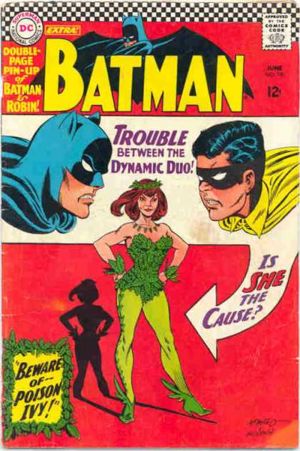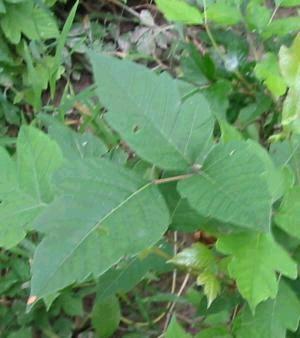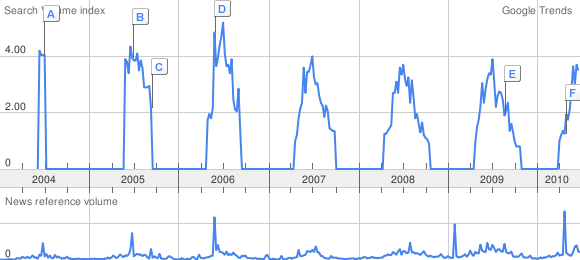It's peak poison ivy time: 'Leaves of three, let it be'

Courtesy DC Database. Carmine Infantino, Murphy Anderson cover artists.
Pamela Isley is Poison Ivy in the Batman comic series; she first appeared in Batman Volume 1, #181.
The Fourth of July brings fireworks and, unfortunately, poison ivy. The peak of the poison ivy season in the area is in early July, and with it comes itching, scratching and the fervent wish that you had worn long pants and not been so eager to blaze a trail through the woods.
Here are some links that might help you recognize poison ivy, prevent being affected by it and take care of yourself if you manage to get hit by it. There are many good photo collections out there showing what poison ivy looks like, but I wasn't able to get a real good inventory of pictures of poison ivy in area parks.
Poison ivy identification
The Wikipedia page for poison ivy has a collection of folklore that assists in the identification of poison ivy, which is a common vine along riverbanks.
"Leaves of three, let it be," is the common saying. The leaves of the poison ivy plant are trifoliate with three shiny almond-shaped leaflets. Mature leaves are dark green and turn reddish in the fall.
Other sayings include: "Hairy vine, no friend of mine," and "Raggy rope, don't be a dope!" Poison ivy vines attach to trees and have numerous hairy reddish aerial rootlets.
The Ohio State University has a fact sheet on Poison Ivy with helpful tips.

Lorrie Shaw / Contributor

Lorrie Shaw / Contributor
Poison ivy in popular culture
From the Kamp Krusty episode of The Simpsons:
"Marge: Lisa, watch out for Poison Ivy. Remember, "Leaves of three, let it be."
Homer: "Leaves of four, eat some more!'' Heh heh heh."
Poison ivy treatment and care
References for poison ivy care include:
National Library of Medicine
WedMD
University of Michigan
Urushiol

Urushiol molecule, Wikimedia Commons
The toxic component in poison ivy is urushiol, a pale yellow sticky oil. This compound is also found in the sap and skin of mangoes, which means that some people who are sensitive to poison ivy also have problems with mangoes. If you buy peeled, frozen, cut mangoes with all of the skins removed, you can still eat them.
Fisher's Contact Dermatitis, 6th edition, 2008 (ISBN 1550093789) has a thorough medical discussion of the effects of urushiol on the skin.
References
Poison Ivy, Oak, and Sumac Information Center: Jim Dunphy has been collecting news, information, folklore and remedies for poison ivy since 1999. The site is well organized and complete.
Poison-Ivy.Org. Jonathan Sachs has been managing this site since 2001; note that it has many photos. "If you re-use these poison ivy images without permission or sell them you will get a case of poison ivy that won't quit."
Poison ivy in Google Trends

Google search traffic over the past six poison ivy seasons shows a mid-year peak in interest in poison ivy.
Google Trends
Edward Vielmetti gets itchy just thinking about poison ivy for AnnArbor.com. Contact him at edwardvielmetti@annarbor.com.


Comments
Rork Kuick
Thu, Jul 15, 2010 : 7:15 a.m.
I found the "Poison Ivy, Oak, and Sumac Information Center." web-site to have some useful stuff, but it is also chocked full of woo (garbage medical advice) including homeopathic prevention pills, and various anecdotes of treatments that are likely no better than washing the area. The curators are far too open-minded (hey, might be true, right?), and seemed ready to show anything anybody ever wrote. It's easy to have folks proclaim that something "worked for them" for this when it really doesn't do much. Some of that bias can come from the fact that now (finally) they are better able to identify the plant, and take more care, whereas they weren't really good at avoiding it before. Or now, after exposure, they are smart enough to wash areas likely to have been exposed, but whatever magical other thing they now do get credited for making the symptoms less severe. Cleaning the area with anything will help, but is more likely to become a fable if it involved mystical methods (usually jewelweed, which I admit may have some additional soothing effect though, but perhaps mostly it is just getting rid of that oil). Maybe folks are getting some immunity might explain some of the stories too, but that is a difficult and uncertain topic. Many stories can just be attributed to "tincture of time". Folks will say stuff like "now I can walk right through the stuff" - well, so can I, if I do so gently (and I do) and nobody has crushed the plants ahead of me. Breaking leaves or stems gets me in trouble though (I handle it regularly), unless I clean it off pretty soon. Poison sumac is even more like this - I can handle the stems for hours, but if I break or crush it, trouble begins (most people don't encounter this plant much cause the environments it occupies are swampy/boggy). Again, much of the stuff there is good, but be skeptical. My main advice is to know how to identify the thing, and clean carefully if you might have been exposed. To any person regularly outdoors with some interest in plants, the sight PI is (or should be) almost as obvious as a burning Christmas tree. Point it out to kids often. Get them interested in botany, and other reality-based activities.
Epengar
Mon, Jul 5, 2010 : 11:21 a.m.
Cashews and mangos are both in the same family of plants as poison ivy, and people who are very sensitive to poison ivy may have some allergic sensitivity to these plants.
MichGirl
Sun, Jul 4, 2010 : 9:15 a.m.
Amen! on the burning of Poison Ivy. Several years ago, we lived in the country where burning leaves and brush is common and legal. Apparently my young daughter walked through wafting smoke where someone was burning PI. Shortly thereafter, her face swelled to where she was almost unrecognizable. This lasted for days and required a Prednisone taper and antibiotics after it became infected. What a nightmare and one we haven't forgotten. Despite that I STILL am not good at recognizing PI in the woods so I stay away!
krc
Sat, Jul 3, 2010 : 9:43 a.m.
Also for Heaven's sake a WARNING! Do not, I repeat, DO NOT BURN IT! The oils get into the smoke. If you come in contact with it, you will get severe Poison Ivy. So, all you gardeners and brush-clearers take note and take it to the dump.
localgirl
Fri, Jul 2, 2010 : 10:52 p.m.
You can also pick it up from your pets. The resin collects on their fur when they rummage in the woods. When you pet or clean them, it transfers to your hands or towels.
Lorrie Shaw
Fri, Jul 2, 2010 : 4:10 p.m.
I am terribly allergic to poison ivy. I'd no idea that mangoes had a related risk of irritancy. Sadly, poison ivy is everywhere, it seems and knowing how to identify it it important - it can even be found on beaches. In this environment, it looks different, and the plant looks different at varying times of year. I keep my jewelweed soap on hand to get rid of the oil on my skin if I think that I might have been exposed, or after handling any pets. It's good for alleviating the symptoms if a rash rears its head. Best of all - no side effects! (I do use regular doses of Benedryl if I get a rash, too!) I'm determined that I will not get it this year.
bedrog
Fri, Jul 2, 2010 : 11:20 a.m.
an actual photo would help.. also fyi mango skins have a related irritant, so if you eat them from the peel you may get symptoms around your mouth